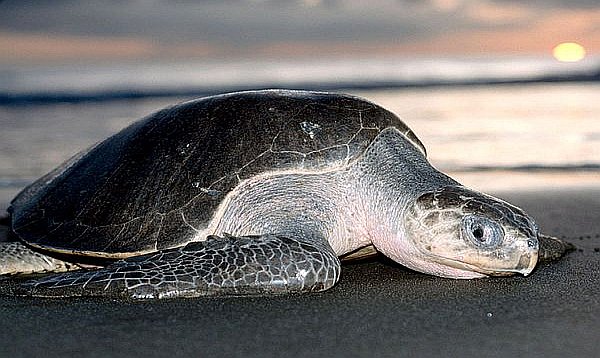Puerto Vallarta, Mexico - It's not just tourists that like the beaches of Banderas Bay. Sea turtles love them, too.
The Bay of Banderas is the birthplace of thousands of Olive Ridley sea turtles, and every summer they return to the beaches on which they were born to lay their eggs - one of Puerto Vallarta's most visible and interesting ecological cycles.
Earlier this month, sea turtles began laying their eggs as part of the yearly natural phenomenon that starts in June and lasts through September. Forty-five days later, their eggs begin to hatch, attracting visitors looking to experience the magic of life first-hand by taking part in the Banderas Bay region's turtle hatching season.
 |
With the support of professional marine biologists and the city's Department of Environment and Ecology, many resorts run turtle conservation and protection programs that give turtle-loving travelers an opportunity to take part in this unique educational vacation experience.
In addition to working with local environmental experts and scientists to protect the turtles, many of the resorts host special events during the hatching season of July to December (the largest number of hatchings take place in November) that give participants the opportunity to learn more about the Olive Ridley, while creating environmental awareness and encouraging others to help save them.
Some hotels invite guests to participate in nightly beach patrols in search of turtle nests, under the guidance of a marine biologist. When a nest is found, participants help gather the eggs and transport them, still in their nests, to sea turtle nurseries for incubation.
Approximately 45 days later, the baby turtles emerge from their eggs. When the baby turtles are ready to be released, participants are invited to name the turtles, wish them luck and set them free. The turtles are returned to the sea at the edge of the resort's beach, where some of them will return a decade later to start the process all over again.
There are also a number of ecological groups that run turtle camps and nurseries in the greater Banderas Bay area, where you can help newborn turtles through the first steps of their lives. Among them are: Campamentos Tortugueros Puerto Vallarta, a 2 kilometer stretch of beach from Playa de Oro to Playa los Tules in the northern part of Puerto Vallarta; and, in the Riviera Nayarit, Grupo Ecologico de la Costa Verde's Marine Turtle Nursery, Platanitos Turtle Camp and Grupo Ecologico de Nayarit's Playa el Naranjo.
During the summer and fall months, travelers can volunteer or go on tours of these nurseries and nesting sites to learn about the fascinating life cycle of sea turtles for just one night or by participating in a two-month-long volunteer project, subject to availability. For more information, visit project-tortuga.org.
Before the development of programs such as these, only 40% of the eggs that were laid along the shores of Banderas Bay survived, but today, thanks to programs such as these, almost 96% of the eggs deposited are incubated successfully.
Turtle-loving travelers heading to Puerto Vallarta this summer are invited to join one of the Banderas Bay region's many sea turtle protection programs, which help thousands of baby Olive Ridley sea turtles survive long enough to reach the sea.


